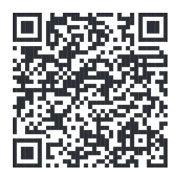

Myths about breastfeeding commonly come from friends or family members, who have passed down advice from older generations. Sometimes this information isn’t backed by science and encourages women to limit their diets when they don’t have to.
Strong flavors such as garlic can change the flavor and smell of human milk. However, it does not usually make infants fussier. On the other hand, studies show that babies of moms who eat garlic tend to be more successful at nursing! Babies nurse longer, which could increase milk supply. Babies who find a variety of flavors in their human milk may transition easier to solid foods and family favorites.
Some Chinese and Southeast Asian women may commonly hear this advice, however, there is no scientific basis for this recommendation.

These foods may cause gas for mom, but gas and fiber from foods are not passed along in human milk. You can enjoy as much as you can tolerate without the need to worry if it’s going to impact your baby’s tummy!
Cow’s milk allergy is very rare in exclusively breastfed infants. Compared to formula there is a much smaller amount of cow’s milk protein (a potential allergen) in human milk. Also, cow’s milk contains some nutrients (vitamin A, zinc, magnesium) that help the immune system, which may help reduce child allergic diseases. Avoiding dairy products when you don’t need to can result in calcium loss from your bones.
You may have given up coffee while pregnant. However, the caffeine passed into human milk is minimal. On the other hand, you also shouldn’t overdo it on caffeine because it can cause your baby to be fussy or irritable. Medical organizations recommend limiting caffeine to 200-300mg a day. Newborn or preterm babies process caffeine more slowly so you may want to consider lowering your caffeine intake even more. Keep in mind there are many sources of caffeine:
100 mg per 8 oz.
35-50 mg per 12 oz.
50-60 mg per 8 oz.
230 mg in 1.9 oz.
25 mg in 1.4 oz.
1-3 mg in 1 packet
Back in the day it was recommended that pregnant and breastfeeding women avoid possible allergenic foods like soy, eggs, and peanuts. Research has shown that this restriction is not necessary. National and International Guidelines recommend that potentially allergenic foods such as peanut and peanut butter don’t need to be avoided by nursing moms. In fact, the early introduction of peanut-containing products to baby at 4-6 months may prevent peanut allergies. (If you or your baby have a diagnosed food allergy, speak with your doctor about eating allergenic foods.)
A special diet is not needed while you’re breastfeeding. While babies may get fussy, remember that there are many reasons for that! Babies’ gastrointestinal systems are still immature, so they may get gas or be fussy no matter what you eat! Babies also get gas from swallowing air while crying or eating too fast. Pay attention if there is a pattern to their fussiness—for example if it always happens when you eat a certain food or eat a lot of a certain food. Breastfeeding is still the best way to ensure your baby has fewer infections and also a lower risk of asthma and sudden infant death syndrome.
Author: Bridget Swinney MS, RDN, LD
B M, Patani J, Ekambaram G, P P. Effect of Allium sativum consumption for breastfeeding among postnatal Indian mothers. Bioinformation. 2023 Jun 30;19(6):698-702. doi: 10.6026/97320630019698. PMID: 37885786; PMCID: PMC10598363.
https://www.ncbi.nlm.nih.gov/pmc/articles/PMC10598363/
McWilliam V, Netting MJ, Volders E, Palmer DJ; WAO DRACMA Guideline Group. World Allergy Organization (WAO) Diagnosis and Rationale for Action against Cow’s Milk Allergy (DRACMA) guidelines update – X – Breastfeeding a baby with cow’s milk allergy. World Allergy Organ J. 2023 Nov 3;16(11):100830. doi: 10.1016/j.waojou.2023.100830. PMID: 38020284; PMCID: PMC10656250.
https://www.ncbi.nlm.nih.gov/pmc/articles/PMC10656250/
Järvinen KM, Westfall JE, Seppo MS, James AK, Tsuang AJ, Feustel PJ, Sampson HA, Berin C. Role of maternal elimination diets and human milk IgA in the development of cow’s milk allergy in the infants. Clin Exp Allergy. 2014 Jan;44(1):69-78. doi: 10.1111/cea.12228. PMID: 24164317; PMCID: PMC4038099.
https://www.ncbi.nlm.nih.gov/pmc/articles/PMC4038099/
Stråvik M, Barman M, Hesselmar B, Sandin A, Wold AE, Sandberg AS. Maternal Intake of Cow’s Milk during Lactation Is Associated with Lower Prevalence of Food Allergy in Offspring. Nutrients. 2020 Nov 28;12(12):3680. doi: 10.3390/nu12123680. PMID: 33260602; PMCID: PMC7761074.
https://www.ncbi.nlm.nih.gov/pmc/articles/PMC7761074/
La Leche League International. The Breastfeeding Answer Book, Third Edition. Pp 438-441. 2003.
Maternal Diet and Breastfeeding.
https://www.cdc.gov/breastfeeding-special-circumstances/hcp/diet-micronutrients/maternal-diet.html?CDC_AAref_Val=https://www.cdc.gov/breastfeeding/breastfeeding-special-circumstances/diet-and-micronutrients/maternal-diet.html Accessed 9-2-24.
https://www.cdc.gov/breastfeeding-special-circumstances/hcp/diet-micronutrients/maternal-diet.html?CDC_AAref_Val=https://www.cdc.gov/breastfeeding/breastfeeding-special-circumstances/diet-and-micronutrients/maternal-diet.html
European Food Safety Authority. Scientific Opinion on the Safety of Caffeine.
https://www.efsa.europa.eu/en/efsajournal/pub/4102 Accessed 9-2-24.
Center for Science in the Public Interest Caffeine Chart.
https://www.cspinet.org/caffeine-chart Accessed 9-2-24.
What’s causing gas in my breastfed baby?
https://www.texaschildrens.org/content/wellness/whats-causing-gas-my-breastfed-baby#:~:text=For%20breastfed%20babies%2C%20gas%20might,intestinal%20gas%20is%20not%20harmful
Abrams EM, Sicherer SH. Maternal peanut consumption and risk of peanut allergy in childhood. CMAJ. 2018 Jul 9;190(27):E814-E815. doi: 10.1503/cmaj.180563. PMID: 29986856; PMCID: PMC6041250.
https://www.ncbi.nlm.nih.gov/pmc/articles/PMC6041250/
Halken S, Muraro A, de Silva D, Khaleva E, Angier E, Arasi S, Arshad H, Bahnson HT, Beyer K, Boyle R, du Toit G, Ebisawa M, Eigenmann P, Grimshaw K, Hoest A, Jones C, Lack G, Nadeau K, O’Mahony L, Szajewska H, Venter C, Verhasselt V, Wong GWK, Roberts G; European Academy of Allergy and Clinical Immunology Food Allergy and Anaphylaxis Guidelines Group. EAACI guideline: Preventing the development of food allergy in infants and young children (2020 update). Pediatr Allergy Immunol. 2021 Jul;32(5):843-858. doi: 10.1111/pai.13496. Epub 2021 Mar 29. PMID: 33710678. https://pubmed.ncbi.nlm.nih.gov/33710678/
Preventing Allergies: What you should know about your baby’s Nutrition. 2015.
https://www.aaaai.org/Aaaai/media/MediaLibrary/PDF%20Documents/Libraries/Preventing-Allergies-15.pdf
Donovan S, Dewey K, Novotny R, Stang J, Taveras E, Kleinman R, Raghavan R, Nevins J, Scinto-Madonich S, Butera G, Terry N, Obbagy J. Maternal Diet during Pregnancy and Lactation and Risk of Child Food Allergies and Atopic Allergic Diseases: A Systematic Review [Internet]. Alexandria (VA): USDA Nutrition Evidence Systematic Review; 2020 Jul. PMID: 35289989. https://pubmed.ncbi.nlm.nih.gov/35289989/
Greer FR, Sicherer SH, Burks AW; COMMITTEE ON NUTRITION; SECTION ON ALLERGY AND IMMUNOLOGY. The Effects of Early Nutritional Interventions on the Development of Atopic Disease in Infants and Children: The Role of Maternal Dietary Restriction, Breastfeeding, Hydrolyzed Formulas, and Timing of Introduction of Allergenic Complementary Foods. Pediatrics. 2019 Apr;143(4):e20190281. doi: 10.1542/peds.2019-0281. Epub 2019 Mar 18. PMID: 30886111.
https://publications.aap.org/pediatrics/article/143/4/e20190281/37226/The-Effects-of-Early-Nutritional-Interventions-on
Install this web app on your iPhone: tap ![]() and then Add to Home Screen.
and then Add to Home Screen.
Side-Lying Hold
This hold is useful when:
Cross-Cradle Hold
This hold is useful when:
Clutch or “Football” Hold
This hold is useful when:
Cradle Hold
This hold is useful when:
Laid-Back Hold
This hold is useful when: